The NKJV Ancient-Modern Bible joins the legacy of past and present scholars with a modern translation of God’s Word. It includes articles, commentary from the past and present scholars, and ancient Church artwork to present the Gospel. It’s available in hardcover, gray cloth over board, and leathersoft. I’m reviewing the cloth over board, ISBN: 9780785215974, made in China.
Thomas Nelson provided this Bible in exchange for an honest review. I was not required to give a positive review, only an honest one. All opinions are my own.
_________________________________________________________
This Bible is available at (includes some affiliate links)
and many local Bible bookstores
_________________________________________________________
Table of Contents
- Video Review
- Cover and Binding
- Paper
- Typography
- Book Introductions
- Study Material
- Supplemental Articles
- Art of the Church
- Maps
- Conclusion
Video Review
Cover and Binding
This edition is gray cloth-over-board, and it includes a nice slipcase. The front has a logo designed just for this Bible stamped in gold in the bottom right corner. The spine has the title and the NKJV and Thomas Nelson logos stamped in gold.
It’s Smyth sewn and has no trouble staying open to any page. The spine design allows the Bible to open with ease and the pages lay flatter than most Bibles. The size and shape make it easy to hold and carry. The overall size is 8.25 x 6.5 x 1.25″, and it weighs 2lbs, 10.6 oz. It has two long ribbons. They’re gold and red to match the highlights in the Bible.
Paper
The paper is white in color and has a rough enough texture to turn easily. I’d guess the gsm in the low to mid 30’s. It’s decently opaque. Even though this is based on the NKJV Journal Bible, it doesn’t have the same paper. I think this paper would be fine for highlighting.
Typography
The text is printed in a single-column paragraph layout with commentary printed in the outer margins. The layout is actually the NKJV journal Bible with the commentary and other features added. The header shows the book name, chapter, and verse in the outer margin and then the page number next to it separated by a line. Footnotes are placed under the last verse at the bottom of the page.
The typeface is the NKJV Comfort Print designed by 2K/Denmark. It’s 8.5 point when compared to Times New Roman, which reads a little smaller than most 8.5 fonts.
It has around 14 words per line, It wasn’t printed with line-matching (where the text on both sides of the page is printed back-to-back to improve readability), but the opacity of the paper and size of the typeface still make this edition easy to read. The poetic settings look great. The indented letters look good too.
This is a full-color text. Section headings are printed in gold. Verse numbers and writer’s names in the outer margin are printed in red.
Book Introductions
The book introductions take about two pages and show the author, audience, date, purpose, and themes. The introductions have red and gold highlights for titles, some of the text, and the paragraphs have decorative drop-caps and the first word in gold. They’re well-written and include lots of quotes from scholars throughout history about the specific book to show what they thought about the theme of the book, how they used it in their teachings, etc. Names include Matthew Henry, Calvin, Luther, Origen, and many others.
Study Material
Study material includes commentary next to verses, biographies throughout the text, and articles in the back. Here’s a quick look at the study material.
Commentary
The commentary is placed in the margins next to the verses they correspond to. This format does mean there is a lot of space that isn’t used, but this is where using the NKJV Journal Bible as the basis shines in my opinion. Where there isn’t commentary there’s room to write your own notes if you want.
The commentary is by scholars throughout the centuries. They cover single verses and full passages.
Scholars include:
- Polycarp
- Aquinas
- Spurgeon
- Zwingli
- Eugene Peterson
- Erasmus
- CS Lewis
- Chrysostom
- Matthew Henry
- Calvin
- Luther
- Augustine
- Wesley
- Tozar
- Hippolytus
- Christopher Wright
- NT Wright
- Jimmy Carter
- Robert Mounce
- Jack Hayford
With the vast range of scholars and beliefs, there’s bound to be some scholars or teachings you don’t like and some that you do like. As always, I recommend using the commentary for reference and do your own study with prayer.
Biographies
There are dozens of full-page articles that tell the life stories of men and women that have been an influence on Church history. They include their names, a title or what they were known for, their dates, and a list of important works.
Biographies include:
- John Calvin
- Tertullian
- Billy Graham
- John Paul II
- John Knox
- Charles Spurgeon
- John Bunyon
- Gregory the Great
- Gregory of Nyssa
- Martin Luther
- Thomas Aquinas
- Augustine
- Karl Barth
- Ulrich Zwingli
- Menno Simons
- DL Moody
- Athanasius of Alexandria
- Ambrose of Milan
- Cyril of Alexandria
- Johnathan Edwards
- Venerable Bede
- Ignatius of Antioch
- Jerome
- Desiderius Erasmus
Supplemental Articles
It includes lots of articles in the back that cover the historical councils, creeds, doctrines, and controversies. The articles reference teachings from early writers. It also includes sources for reference, Readings for Advent, Lent, and Easter.
Articles include:
- Creation and Fall
- Meditating on His Word
- The Church
- Salvation and Union with Christ
- The Trinity
- What the Whole World is Waiting For
Art of the Church
In the back is sacred art from throughout history that was inspired by the Bible. I like this section a lot. I love art and this is a welcome addition to this Bible. The art is printed on thick glossy paper with a description on one page and the art on the other. Like the commentary, some do include theology.
Artists include:
- Gustave Dore
- Michelangelo
- Rembrandt
- Caravaggio
- Christian Rohlfs
- Makoto Fujimura
Maps
It includes 7 full-color maps printed on 8 thick glossy pages. They’re printed in bright earth-tones. It doesn’t include a map index. The maps are annotated well, so it’s easy enough to find most locations. The maps show topography, distance, routes, borders, possible locations of lost places, battles, elevation, cities, and locations for the events of Jesus’ ministry.
Maps include:
- World of the Patriarchs
- Exodus and Conquest of Canaan
- Land of the Twelve Tribes
- Kingdom of David and Solomon
- Jesus’ Ministry
- Paul’s Missionary Journeys
- Jerusalem in the Time of Jesus
Conclusion
The NKJV Ancient-Modern Bible is an interesting study Bible. I like the format of placing the commentary in the outer margins. I also like that it includes writers throughout history. It also includes biographies of those writers and shows their influence in Church history. It does have a wide range of writers, so there are bound to be a few you might disagree with. I love the red and gold highlights and the art is interesting. I’d like to see a little more art. The book introductions, commentary, and articles are well-written and are good resources for study. If you’re interested in a study Bible with commentary from the past and present, the NKJV Ancient-Modern Bible is worth a look.
_________________________________________________________
This Bible is available at (includes some affiliate links)
and many local Bible bookstores
_________________________________________________________
Thomas Nelson provided this Bible in exchange for an honest review. I was not required to give a positive review, only an honest one. All opinions are my own.


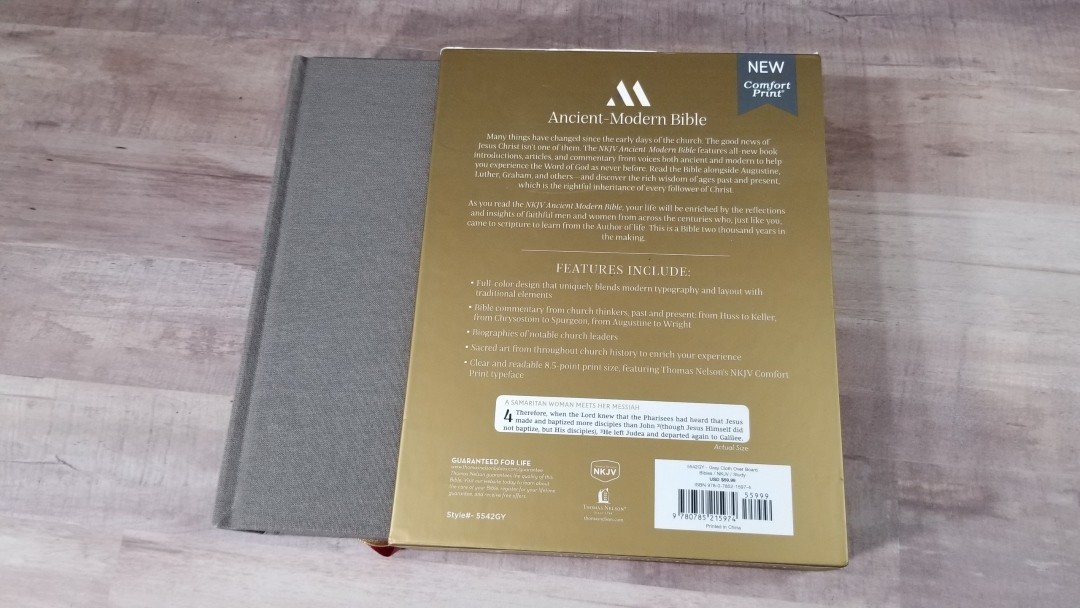
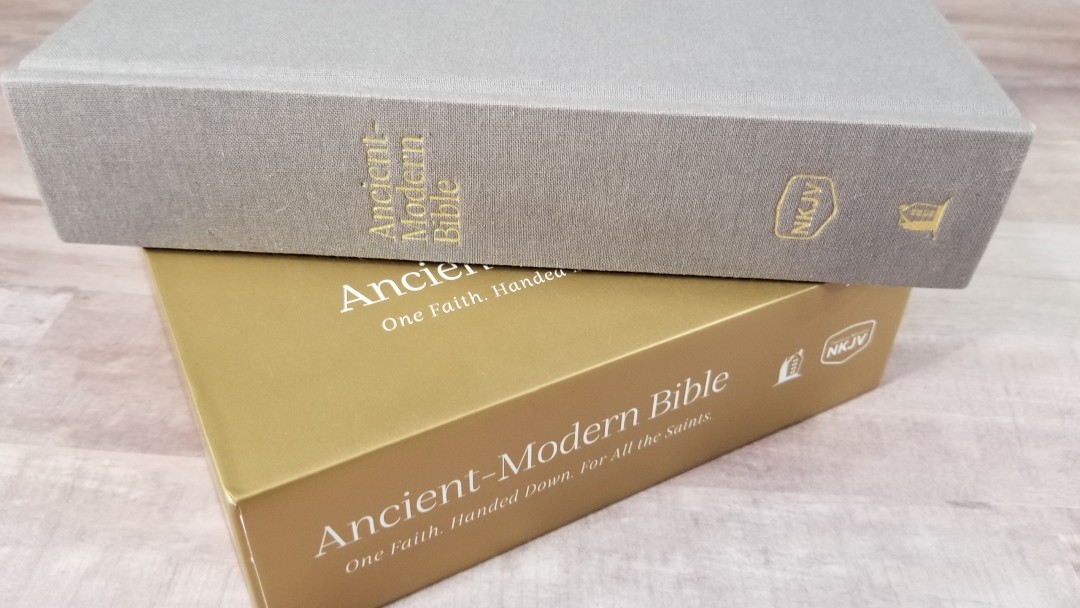

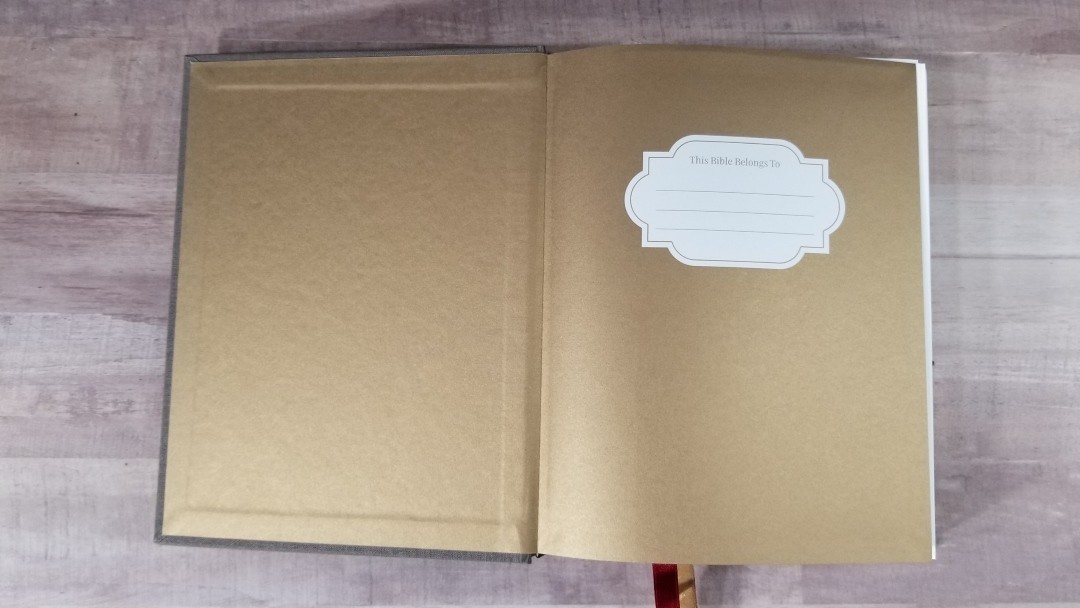
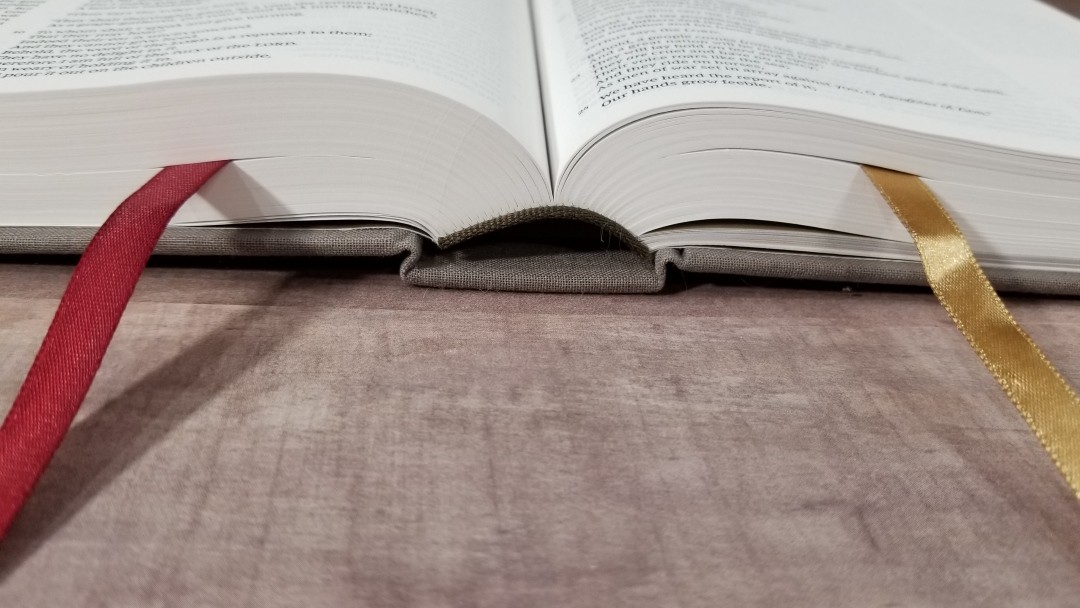
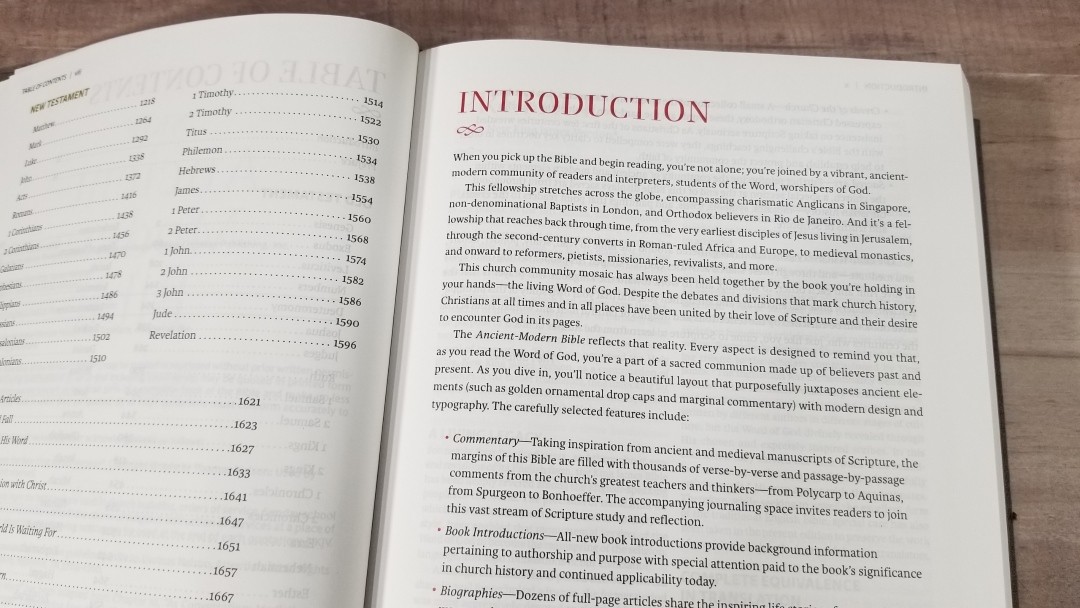
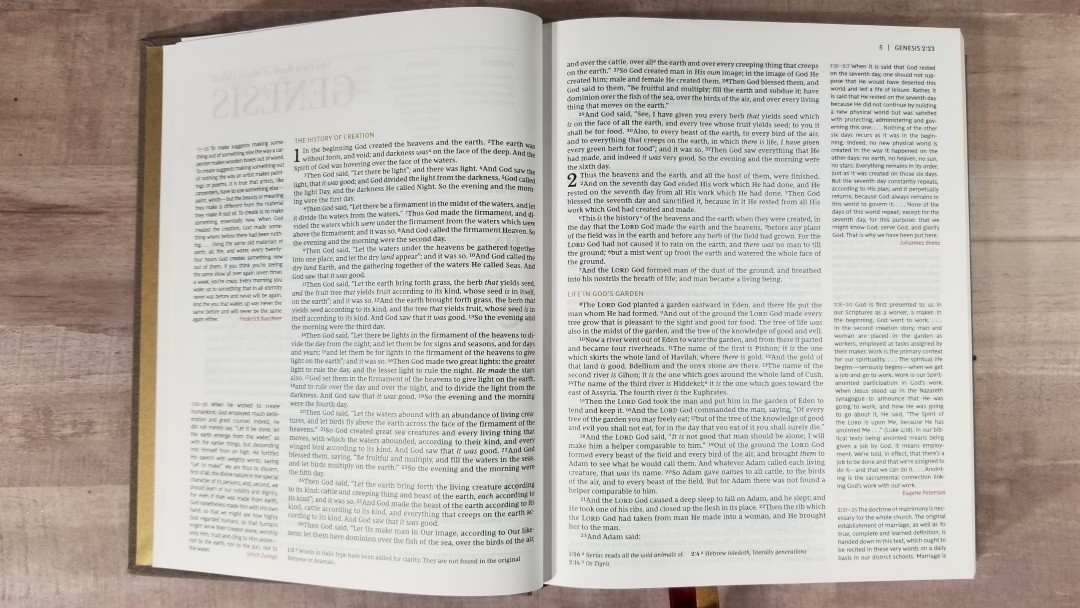
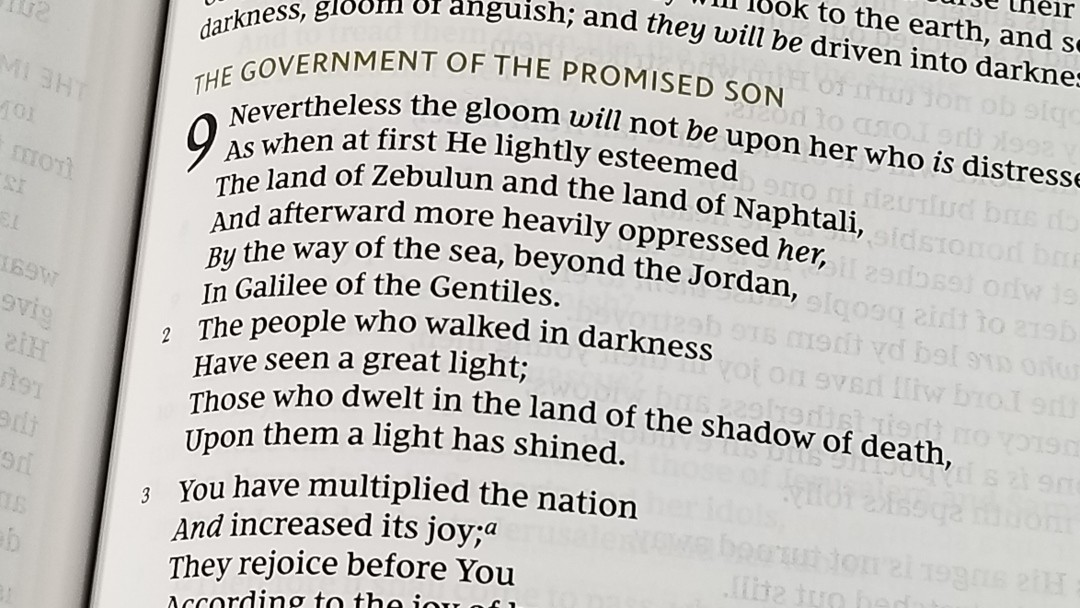
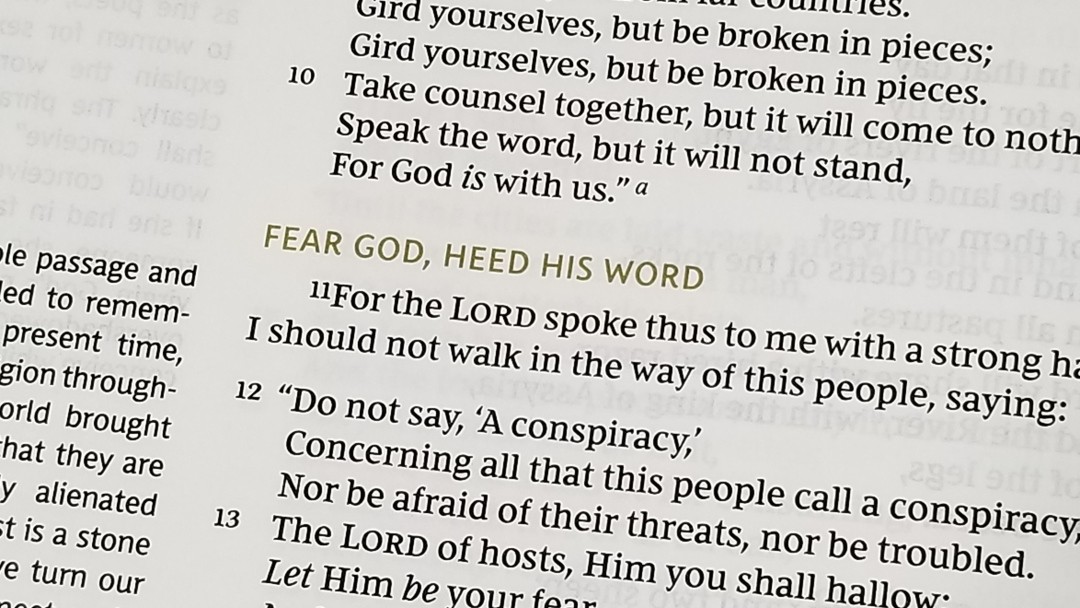

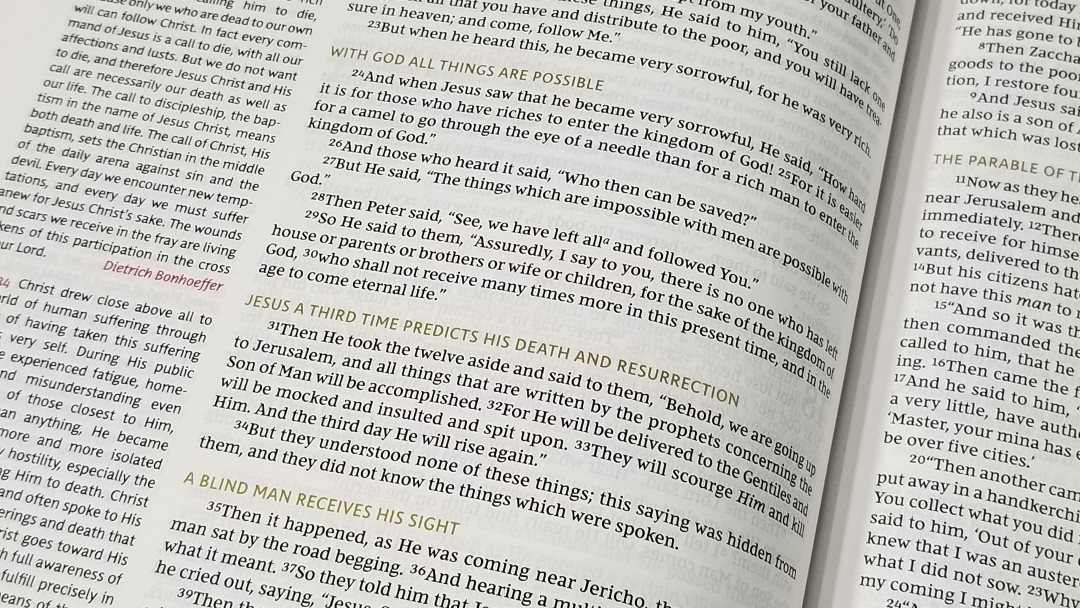

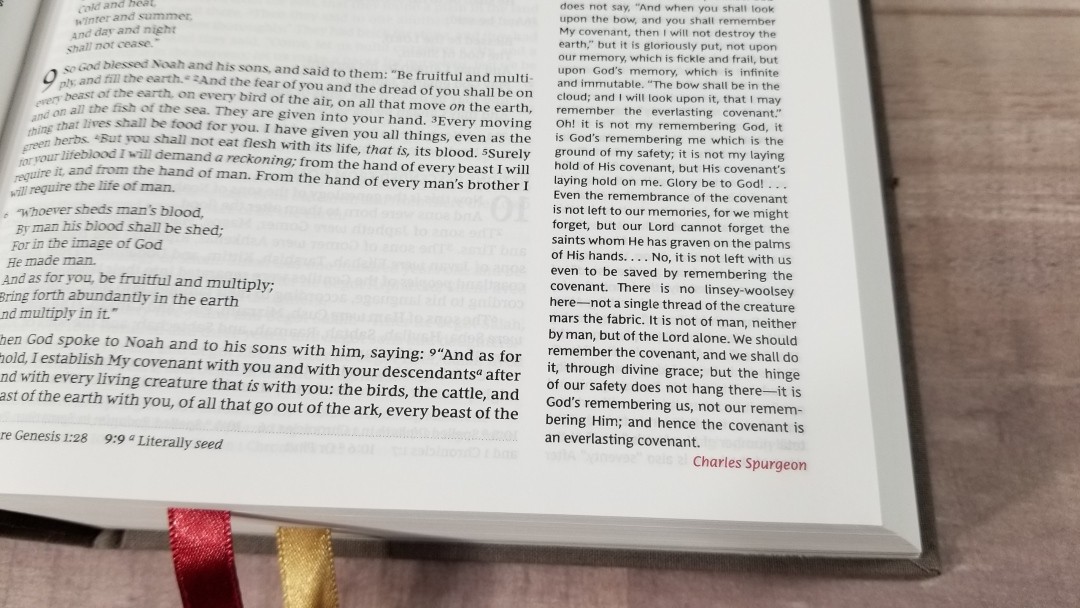
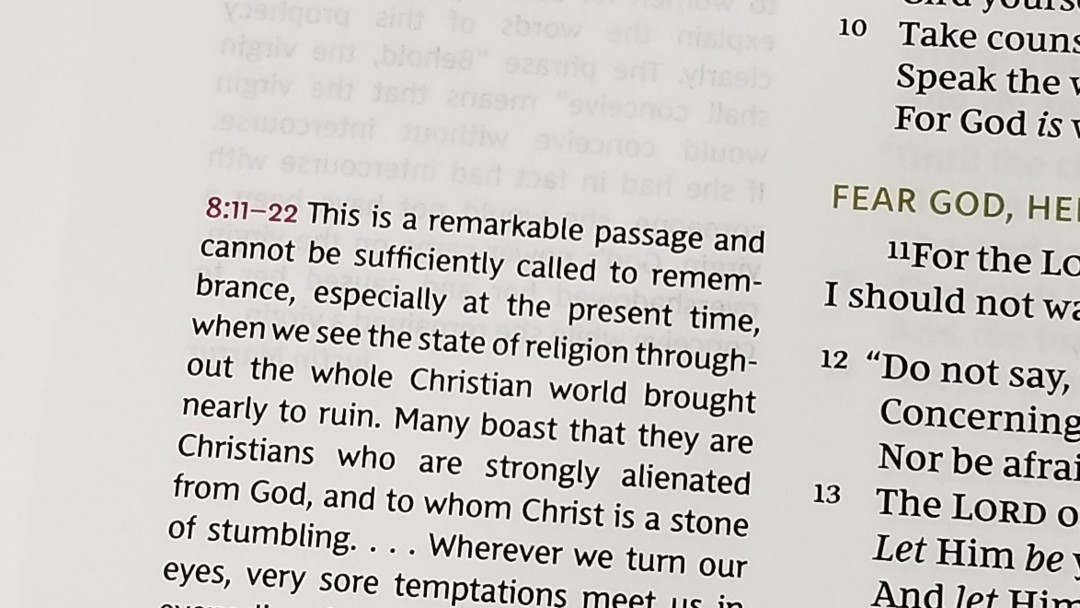



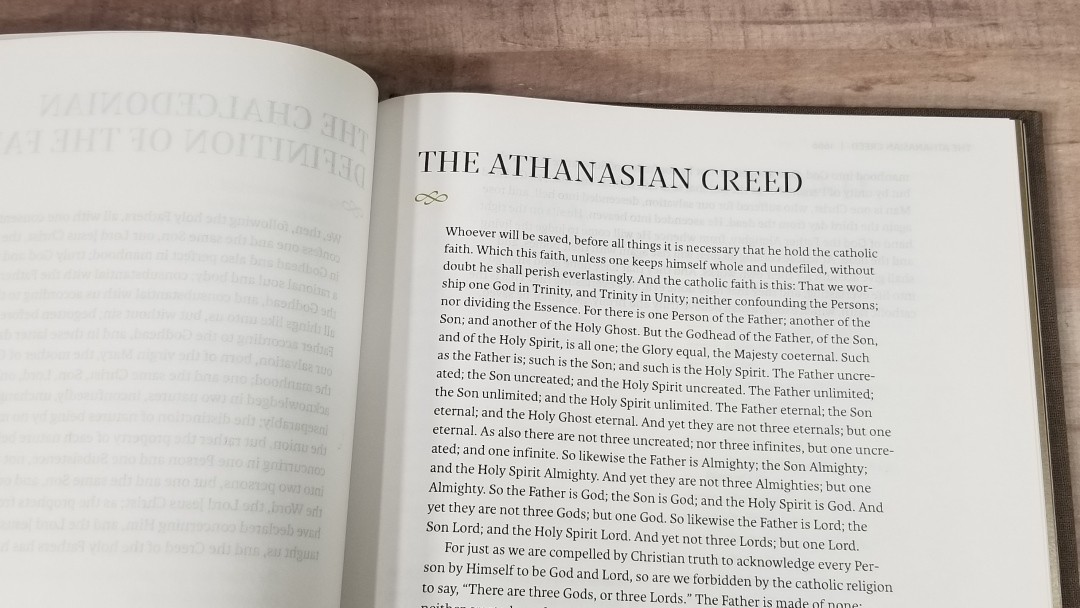
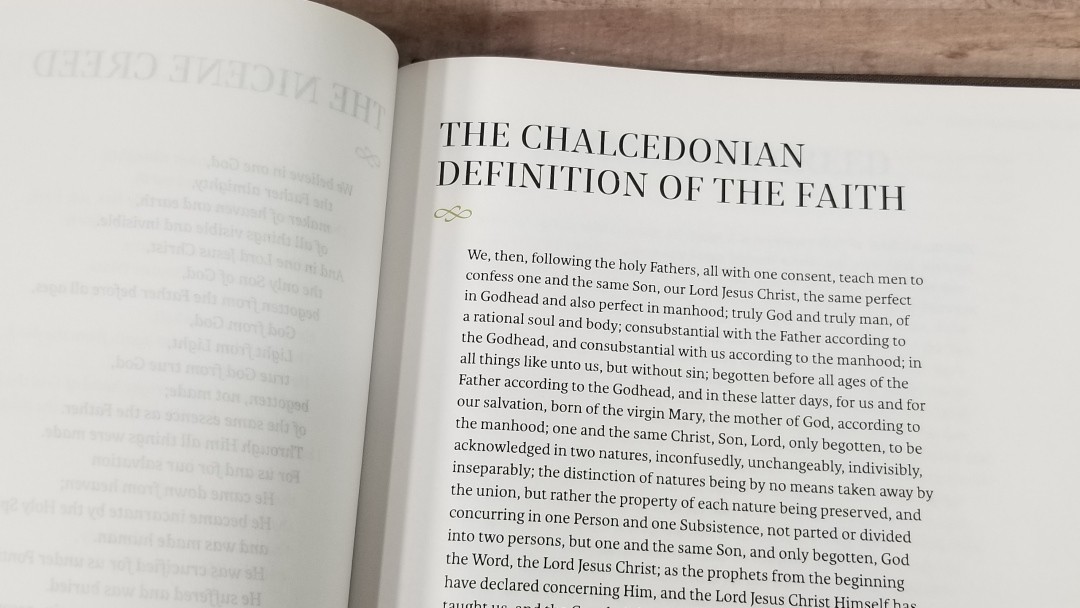
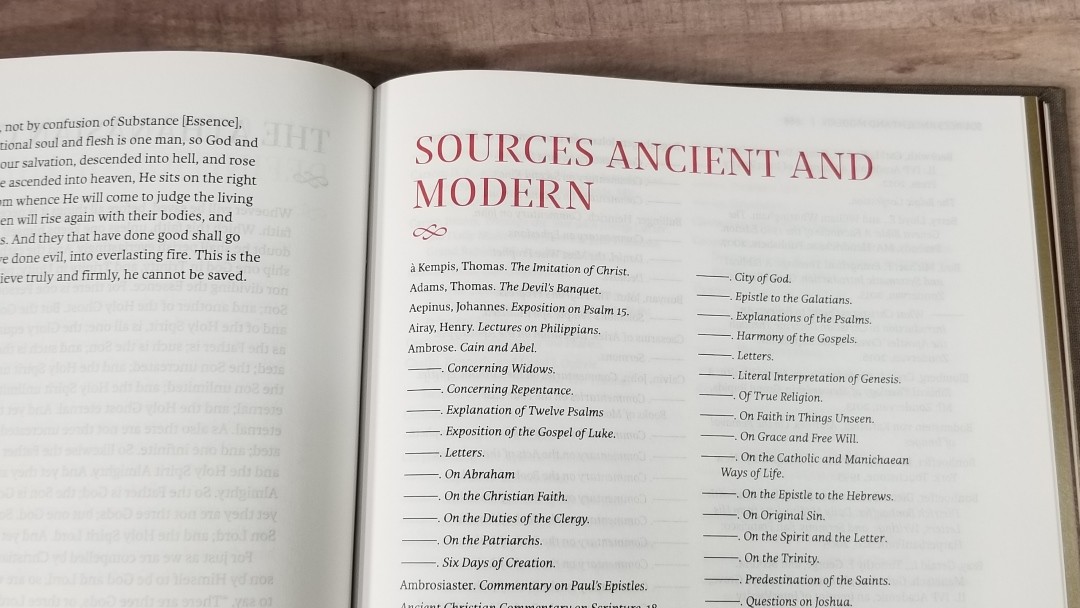
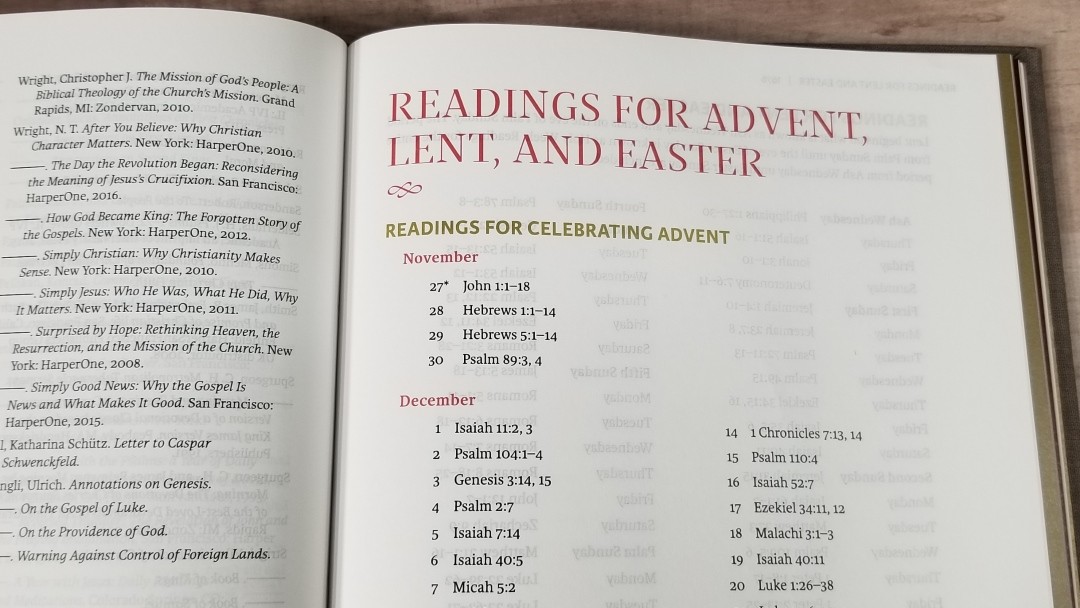
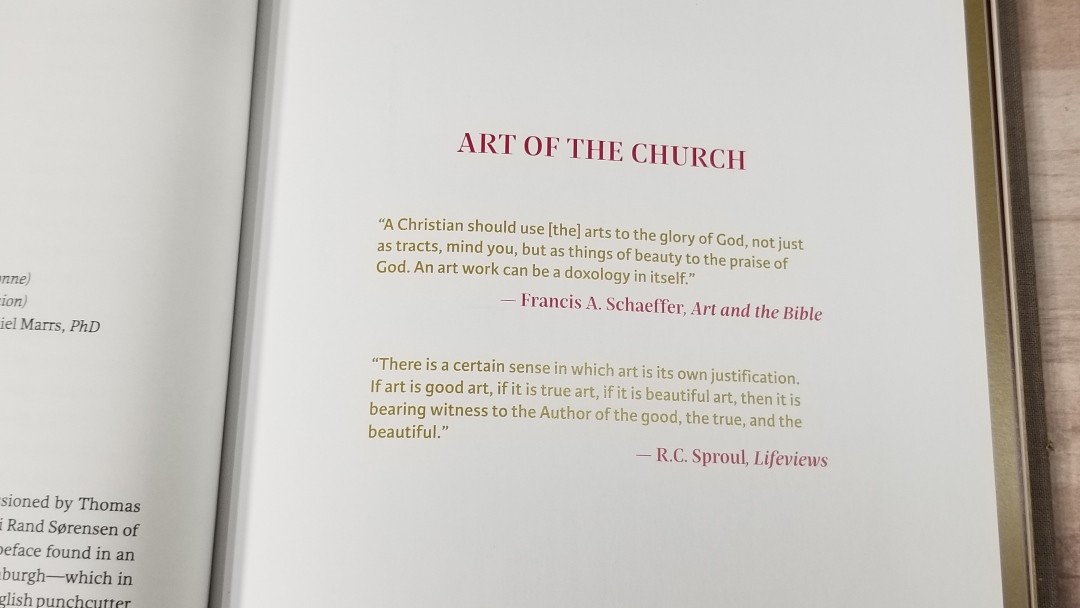
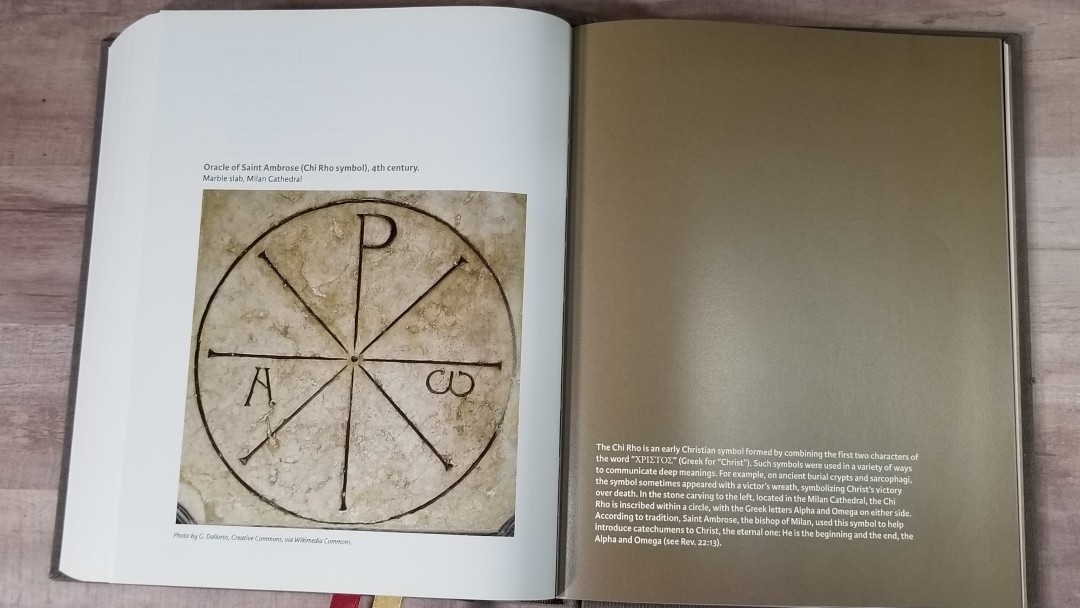

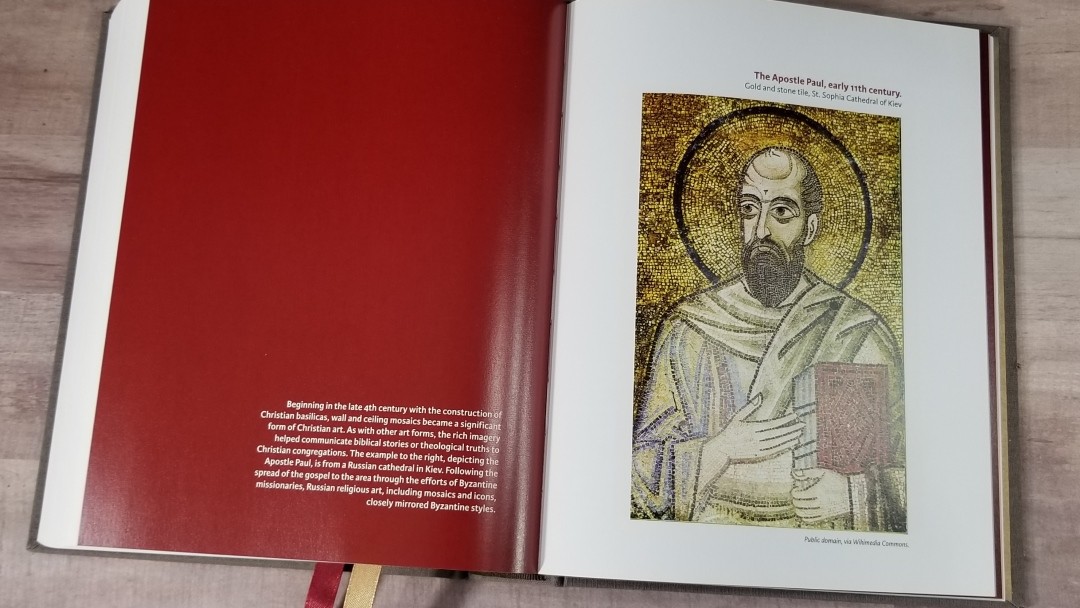
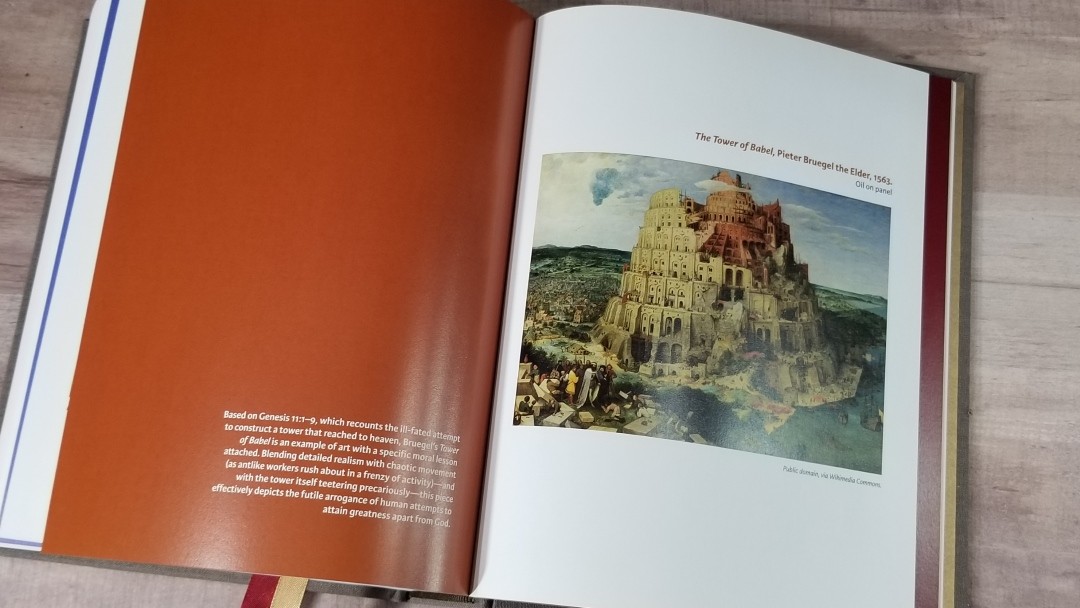
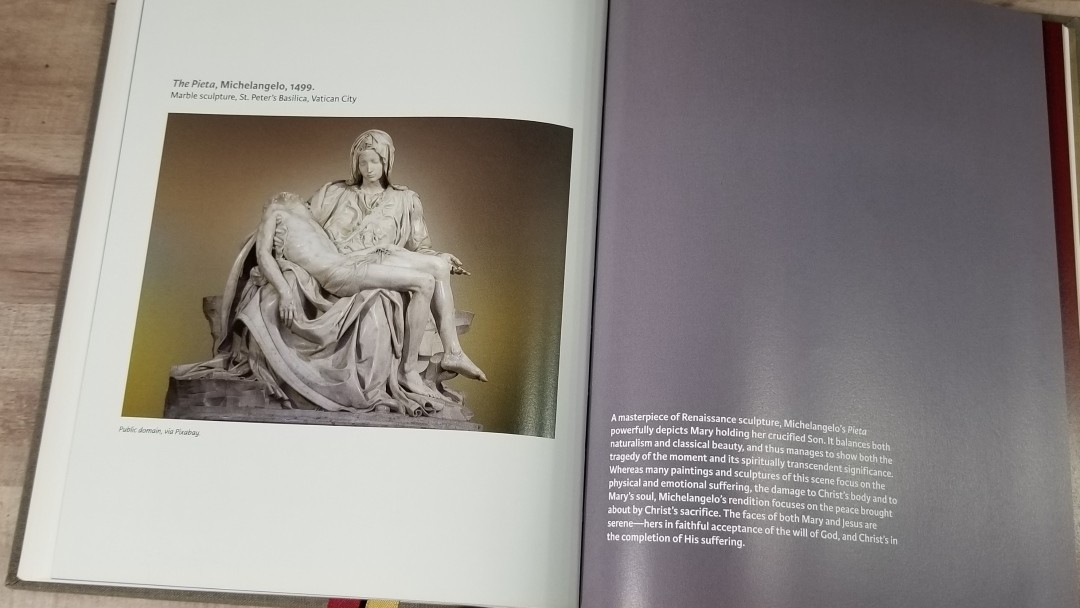

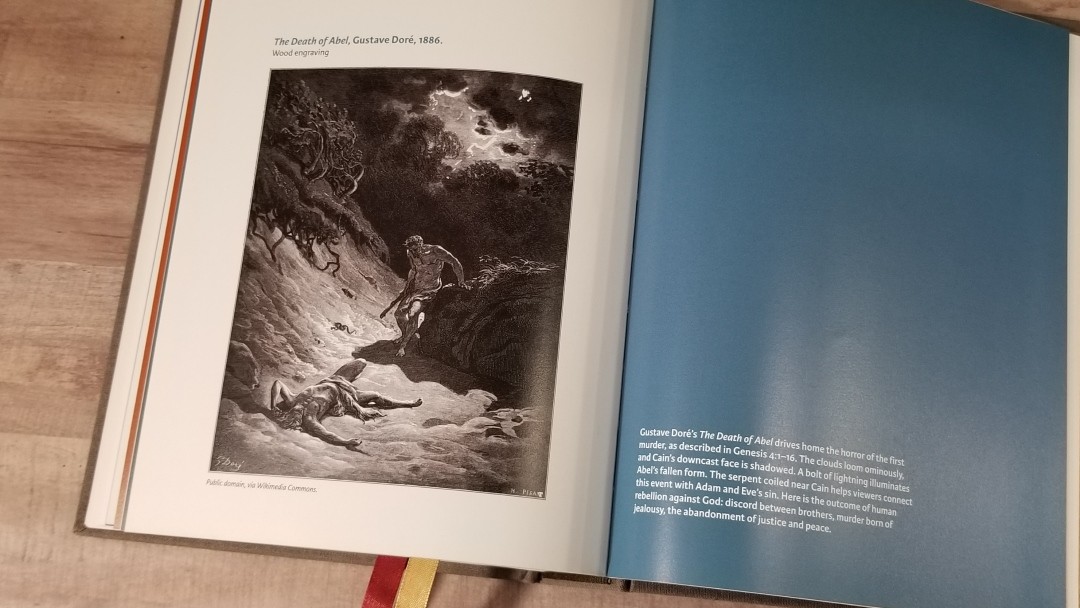
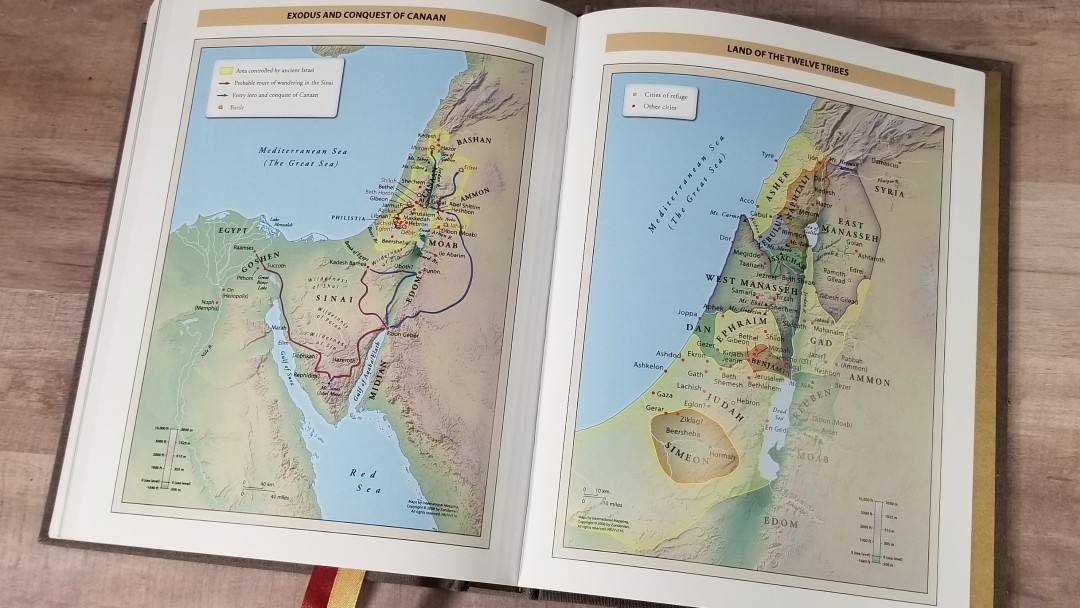
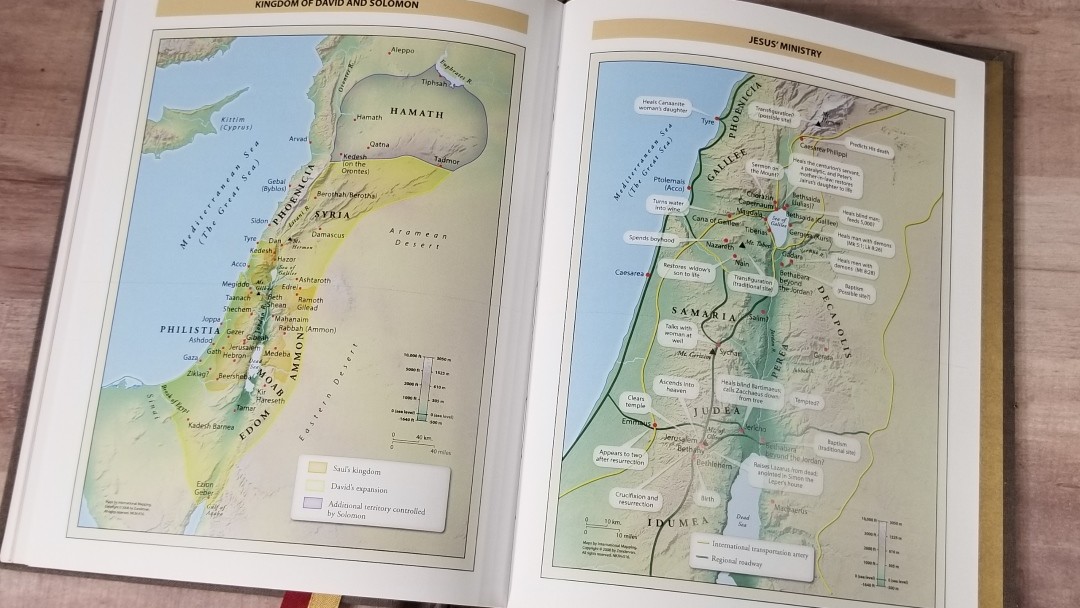
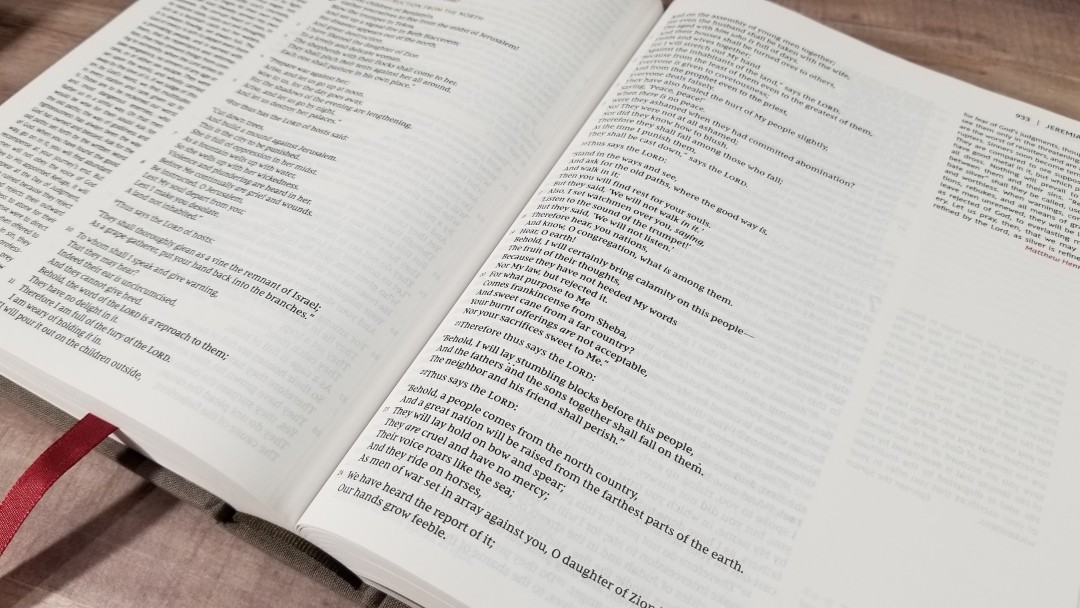

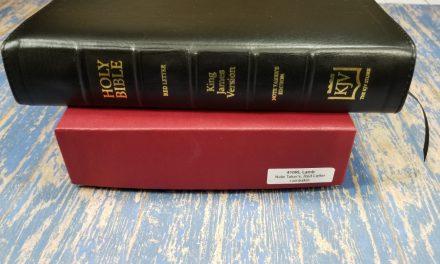

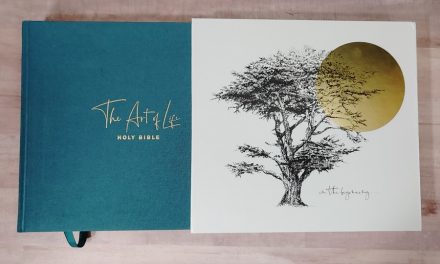







I’ve been making use of the commentary notes by scholars in this study Bible and I am quite shocked by the liberty the editors of taken in editing and representing them. Further there are no references given as to where these supposed comments of the scholars are taken from so it is not possible to properly check back as to their validity or accuracy.